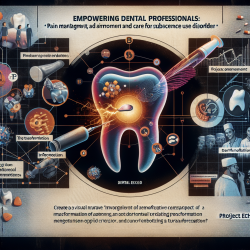Understanding Eye Movements in Schizophrenia Spectrum Disorders
As a practitioner working with individuals with schizophrenia spectrum disorders (SSD), you are likely aware of the challenges in language processing these individuals face. A recent study titled "Agency of Subjects and Eye Movements in Schizophrenia Spectrum Disorders" sheds light on these challenges and offers insights into how practitioners can improve their skills and understanding.
Key Findings from the Research
The study involved 30 individuals with SSD and 30 healthy controls (HCs) and focused on how these groups process language, specifically the thematic roles of "Agent" and "Theme" in sentences. The research revealed that individuals with SSD showed a higher tolerance for anomalous Agents compared to HCs, indicating a unique processing pattern.
When the grammatical subject of a sentence was an anomalous Agent, HCs showed increased gaze duration, suggesting they detected the anomaly. In contrast, individuals with SSD did not exhibit this behavior, indicating a higher tolerance for such anomalies. Conversely, when the subject was a Theme, individuals with SSD displayed increased go-back movements, unlike HCs, suggesting an attention to detail in this context.
Implications for Practitioners
These findings suggest that individuals with SSD may benefit from targeted training that focuses on deep linguistic structures, particularly those involving the concept of agency. Practitioners can consider the following strategies:
- Explicit Training: Develop programs that focus on improving the understanding of thematic roles in language, particularly the role of the Agent.
- Use of Eye-Tracking Technology: Consider incorporating eye-tracking techniques in assessments to gain insights into the cognitive processes of individuals with SSD.
- Customized Interventions: Design interventions that address the specific linguistic anomalies observed in SSD, such as the higher tolerance for anomalous Agents.
Encouraging Further Research
The study opens avenues for further research into the cognitive processes of individuals with SSD. Practitioners are encouraged to explore these areas to enhance their understanding and improve therapeutic outcomes. Investigating the relationship between eye movements and language processing can provide deeper insights into the cognitive challenges faced by individuals with SSD.
To read the original research paper, please follow this link: Agency of Subjects and Eye Movements in Schizophrenia Spectrum Disorders.










